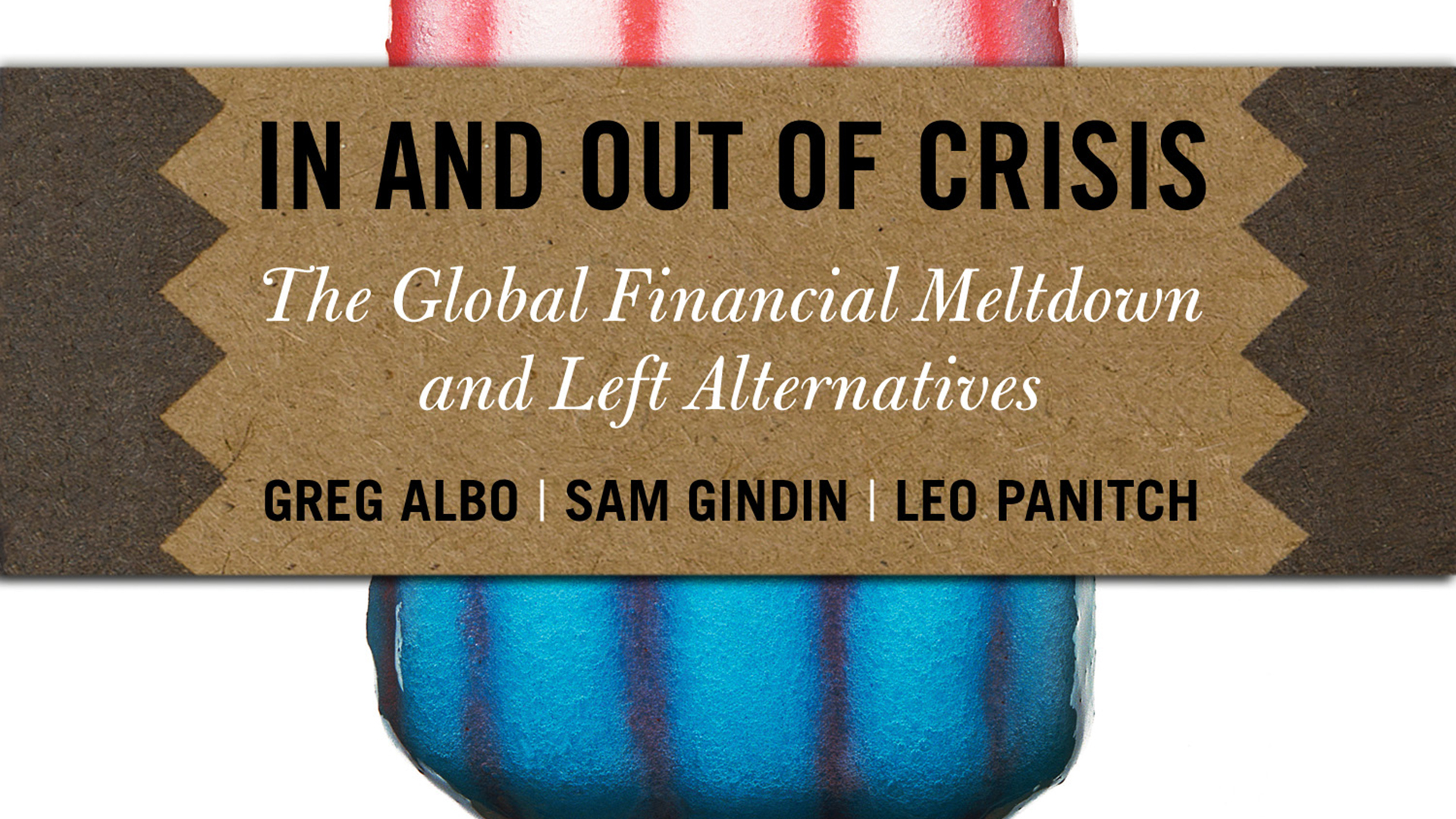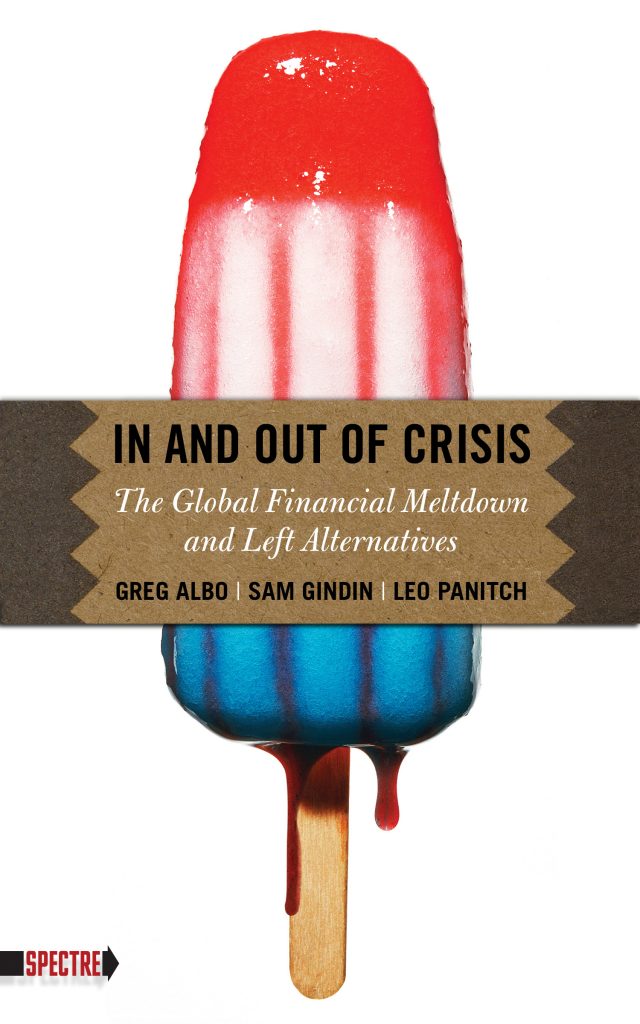By Stuart Schrader
Maximum Rocknroll
August 2010
As Oi Polloi once asked, are we punx or mice? Is the economic crisis the result of stupidity, greed, deregulation, and derivatives—poxy pustules on an otherwise sound system? Or is it the result of structural contradictions of capitalism, contradictions whose management frequently takes the form of stupidity and greed, recently abetted by deregulation and derivatives? If you chose answer #2, collect a gluebag and proceed.
Around the time punk rockers first gobbed on the world, great changes in the capitalist world system were afoot. Punk rock was symptom, signal, and even accelerant of many of these changes. Today, the degree to which the economic crisis is engendering systemic changes remains unclear. Punk rock—ever persistent in its Weltzschmerz, bristles, studs and acne—need not be unprepared either to face a changing world or to aid in its change. Whether three chords, tartan trousers, and shoplifted malt liquor signal preparedness is up to you, but one essential addition to our arsenal is surely In and Out of Crisis by Greg Albo, Sam Gindin, and Leo Panitch.
After reading many accounts of the crisis, including some that are quite compelling page-turners (the best are Meltdown by Paul Mason and The Big Short by Michael Lewis), In and Out of Crisis is bracing. It dispenses with the moralistic platitudes and tendentiousness one finds in the mainstream and on the left, without giving the false impression that the system can be patched like a pair of crust pants and sent back out into the pit. It is rather a jargon-free, easy-to-read account that focuses neither too closely on the day-to-day details of what has been called “the great unraveling” from summer 2007 to fall 2008, nor gives such a long-distance view that the incompetence, cravenness, guile, and greed of the financiers and the Bush administration lose pertinence. Importantly, however, in these writers’ view, the groundwork for the crisis stretches back further than for most others’, to the turbulent late 60s/early 70s, when capitalists found their profit margins imperiled by working-class militancy and began to implement the changes that would be called “neoliberalism,” a set of policies and practices intended to restore lost capitalist class power and redirect wealth upwards. (Punk rock, I contend, was the knell whose tolling indicated the end and transformation of the militancies that were growing increasingly obsolescent as the object of their abhorrence—capitalist classes together with capitalist states—was evolving.) The writers describe their framework as “radical political economy, and in particular its lineages in Marx and state theory,” which is accurate but somewhat coded, as many writers on the crisis whose books are much less useful will claim a similar mantle. Moreover, although aimed at a lay audience, this book is engaged in a debate with several strains of present-day Marxist thought. Nevertheless, following the critique of political economy launched by Marx, from my perspective, the most important aspect of Albo, Gindin, and Panitch’s book is its explosion of the usual dichotomous categories through which most understand the crisis: Wall St./Main St., public/private, state/market. Instead, the dichotomy—or, better put, dialectic—they use, both as a tool of analysis and as a call to political action, is capital/labor.
In mainstream accounts of the crisis, an excessively permissive regulatory climate allowed financial firms to take great risks, including lending money to borrowers who would not be able to repay the loans. Housing prices were increasing and thought to be a fool-proof investment, and as they increased, more and more people who were less and less qualified received first, second, and third mortgages. Like a bolt from the blue, borrowers started to be unable to repay their loans, which set off a cascade of delinquencies. In the days before this permissive regulatory climate, mortgages were held by local institutions mostly. Now, they were “sliced and diced,” packaged together as bonds that were bought and sold around the globe, with insurance taken out against these bonds—bonds which rating agencies gave perfect grades. The insurance was more lucrative than the rate of returns on the bonds themselves because it seemed so impossible that they would be worthless. Once individual mortgages within the bonds defaulted, the bonds themselves, due to the complex way they were constructed, began to lose value precipitously. Financial firms were exposed to great losses because they were over-leveraged due to regulatory changes, meaning that, for example, for every buck Bear Stearns had in its pocket, it owed $33 in debt. When the debt-collectors came calling—the other big financial firms—because they rightly feared their own mortality, Bear Stearns could not meet its debt obligations. And within several months, due to the highly interconnected world of finance, and despite rescue efforts by the US government, everything came crashing down.
Nothing in this account is untrue. But for Albo, Gindin, and Panitch, the order of causes, the time period in which the causes developed, and most importantly, the relationship between the players are flawed. For them, it is fallacious to construe the relationship between the state and the financial firms as one whereby the former protects the latter from their own avarice. Rather, the state and finance are interrelated pieces of a unitary system that is crisscrossed with contradictions but that ultimately uses each to the benefit of the expansion of global capitalism under the hegemonic aegis of the United States. Whereas some consider the state and its regulatory capacities to be akin to a traffic cop in the global financial architecture, a better analogy, in my view, would be to call the state the builder of the road on which the cop is perched, a road built in the most direct possible way between two ziggurats owned by hedge-fund managers. Oh yeah, the financing for the road’s construction? Provided by investors whose names appear in rolodexes on the top floors of those ziggurats. Workers? If they can avoid getting run over and catch a ride on that road, they’re lucky—and there’s no shortage of obstacles in the way, including all manner of security technologies and prisons to keep them from slowing down traffic.
Back in the days just after the second world war, the state conceived its role as building a road that would enable workers to get to and from work, to the mutual benefit of labor and capital (of course there were huge gaps here for everyone who wasn’t a straight white male). The relationship between finance and the state was less chummy back then but it was still indispensable. What happened is that by the late 60s, just as women and nonwhites were achieving some measure of equality, the mutual benefit thing became a little too mutual in the eyes of capital, for a variety of reasons explained in this book. Two primary results were: first, repression of wages. Since the late 1960s, as you surely perceive, as the rich grew exponentially richer, wages have been essentially stagnant for the working class. The cost of living continually increases, but the size of your paycheck hasn’t kept pace. Second, as wages dropped and employment became more precarious (part-time, without benefits, non-union, etc.), capital had a problem generating demand for all the crap it was producing. A seemingly easy fix emerged (through a great deal of political struggle and legal reforms): give those who can’t afford to buy the crap ostensibly cheap and easy credit so they can afford it. The distance from here to derivatives, mortgage-backed securities, and credit-default swaps was not great. Albo, Gindin, and Panitch do not delve into great detail regarding the world-scale machinations that underwrote this system, with changes in interest rates, balance of payments, trade surpluses, etc., but they give you enough to make clear that these arcane processes, which occasionally leave the business pages and seem to enter everyday life, actually are deeply related to the tangible realities of our labor and our political landscape.
As this book is meant to be an introduction to the crisis, I cannot criticize it for oversimplifying, but I am uncomfortable with two aspects. First, there is too much focus on traditional, Rust Belt industry, like auto manufacturing. Given Albo’s former position in the Canadian Autoworkers’ Union, this emphasis is expected, but whereas the authors are actually quite admiring of the technological dynamism of capitalism (as was Marx), their focus on the auto industry, which in the US is so dreadfully stodgy, conservative, and cynical, gives them little space to analyze how this dynamism in other spheres of industry nevertheless relates to the overall crisis of capitalism. After all, less than 13% of the US populace is unionized today, and among those who are, government employment predominates. Books like Nice Work If You Can Get It by Andrew Ross focus on the ways technological dynamism is no solution to workers’ problems: similarly precarious labor conditions are shared by manual laborers and well-trained internet/information workers—some of whom are surely globe-trotting friends of yours. Second, although the book is careful to mention that extending credit to the poor is not a new phenomenon and has always been conceived as a way to keep the poor in line, tacitly supporting capital’s needs as they struggle to make their monthly payments, a more acute analysis of the racialized and gendered dynamics of the lead-up to the crisis and its fallout is absolutely necessary if we are to organize against its recurrence. Nonetheless, this book is a start in diagnosing the problem, which to punx should be clear—capitalism!—and in explicating exactly what that vexed term has come to mean in our lifetimes. What is to be done? This question is not so easily answered, but the book offers some guidance. One of the book’s answers, though still requiring more specifics, will be easily recognizable to readers of this magazine: do it ourselves, outside the logics of capital accumulation. True then, true now. Are we punx or mice?
Back to Greg Albo’s Author Page | Back to Leo Panitch’s Author Page | Back to Sam Gindin’s Author Page







